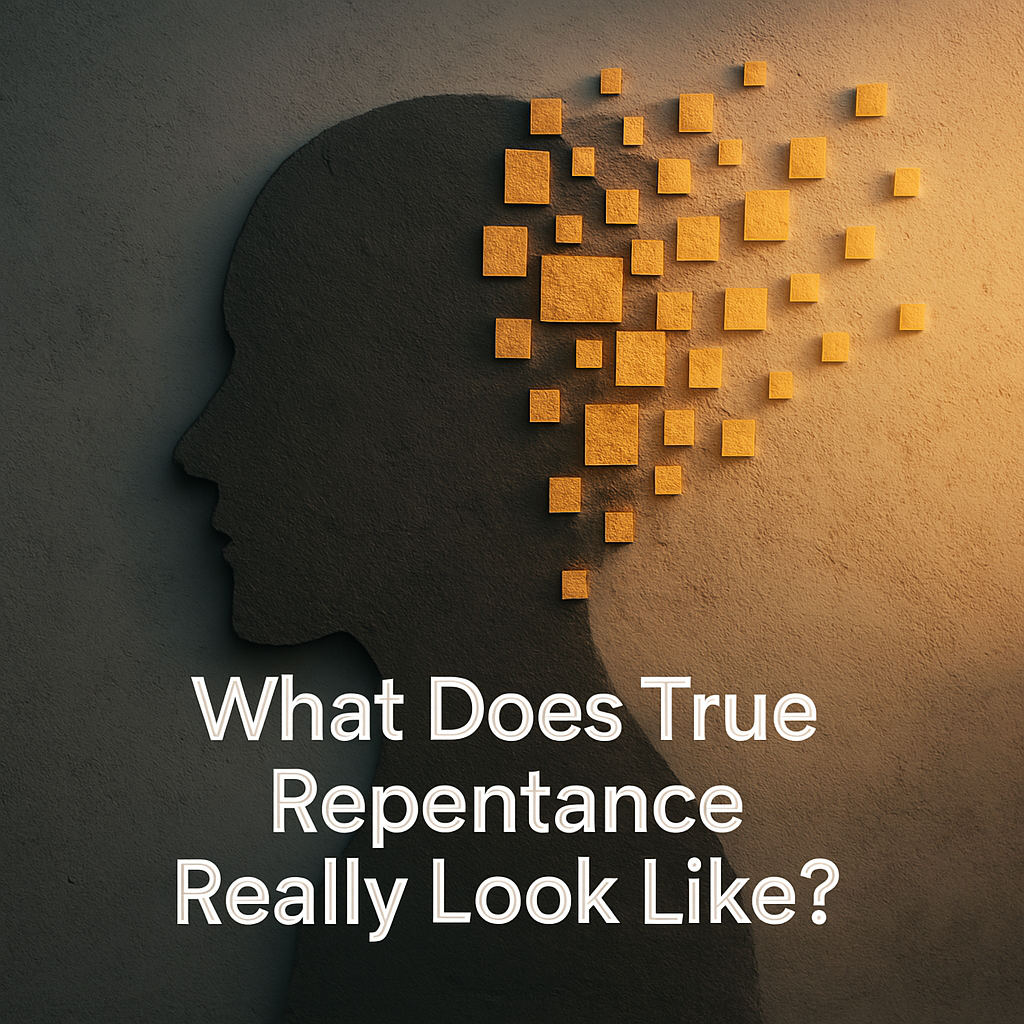Introduction: When Tears Aren’t Enough
We often associate repentance with sorrow, regret, or emotional confession—but are those things truly enough? Many people cry over their sin. Many feel momentary guilt. But if repentance stops at feeling sorry, it may not be repentance at all. The question is, what does true repentance look like? The Bible paints a far richer, more active picture of what it means to turn back to God.
In 2 Corinthians 7:10, Paul writes, “For godly grief produces a repentance that leads to salvation without regret, whereas worldly grief produces death.” This verse draws a sharp distinction between godly sorrow and worldly sorrow. One transforms; the other traps. One leads to salvation; the other leads to ruin.
The Turning, Not Just the Feeling
True repentance is not merely an apology. It’s not simply acknowledging wrongdoing. It’s a turning—a full redirection of the heart, mind, and actions. In Acts 26:20, Paul explains his message was to “declare first to those in Damascus, then in Jerusalem and throughout all the region of Judea, and also to the Gentiles, that they should repent and turn to God, performing deeds in keeping with their repentance.”
Repentance produces visible change. It results in action. The thief doesn’t just say sorry—he returns what was stolen and no longer steals. The gossiper doesn’t just confess—they silence the tongue and speak words of life. The unfaithful doesn’t just weep—they restore what’s broken and walk faithfully. If your life looks the same after “repenting,” the Bible urges you to ask if you’ve truly turned.
The Deceptive Comfort of Conviction Alone
One of the enemy’s most subtle deceptions is confusing conviction with repentance. Many people feel the Spirit’s conviction and assume that means they’ve changed. But conviction without response hardens the heart. In Matthew 21:28–32, Jesus tells the parable of two sons—one who says he will obey but doesn’t, and another who initially refuses but later does the will of the father. It’s not the one who felt or spoke the right thing, but the one who ACTED in obedience, that was justified.
This is why repentance is more than feeling bad. It’s surrendering to truth—even when it hurts your pride, your plans, or your place in the world. Conviction is an invitation. Repentance is the RSVP.
The Pattern of Change
John the Baptist didn’t soften the call. In Matthew 3:8, he exhorts the crowds: “Bear fruit in keeping with repentance.” That statement alone destroys the idea that repentance is internal only. Fruit can be seen. It’s tangible, not theoretical. In Luke 19, Zacchaeus met Jesus and immediately offered restitution to those he had defrauded. His repentance wasn’t a quiet nod of the heart—it was a visible change rooted in a new allegiance.
So I ask, what does true repentance truly look like? True repentance breaks patterns. Not always overnight—but decisively. It may take time to heal and rebuild, but the direction is different. Repentance walks toward light, not just away from darkness.
The Risk of Shallow Repentance in Modern Christianity
Today’s gospel presentation often emphasizes belief over repentance. While belief is absolutely essential, Jesus’ first message in Mark 1:15 was: “The time is fulfilled, and the kingdom of God is at hand; repent and believe in the gospel.” Repentance isn’t an optional add-on—it’s part of the very foundation of salvation. When preachers and teachers remove repentance from the message, they offer comfort without conversion.
This creates congregations who feel sorry but never surrender, who attend services but never yield their lives. They feel stirred, but they’re never changed. And they walk away comforted in their conviction, but unconverted in their soul.
What Does True Repentance Look Like?
The call to repentance is not just for the world out there—it’s for the church. It’s for you. And it’s for me. We have to ask ourselves: Have we truly repented, or have we merely felt bad? Have we turned back to God—or have we just paused temporarily in our sin?
God doesn’t require perfection—but He does require direction. And repentance is the moment we choose to reorient everything toward Him.
If you’re unsure, you’re not alone. But you are invited.
“Or do you presume on the riches of his kindness and forbearance and patience, not knowing that God’s kindness is meant to lead you to repentance?” (Romans 2:4)
Let His kindness lead you home. Not to a moment of guilt—but to a life of change.
Explore more articles rooted in biblical truth → Visit the Articles Page
Read how Scripture reshaped my own faith → My Story of Finding Biblical Truth
All Scripture quotations are from the English Standard Version (ESV), unless otherwise noted.


Leave a Reply